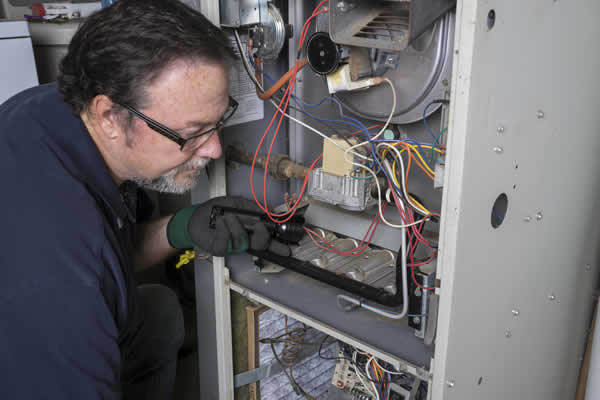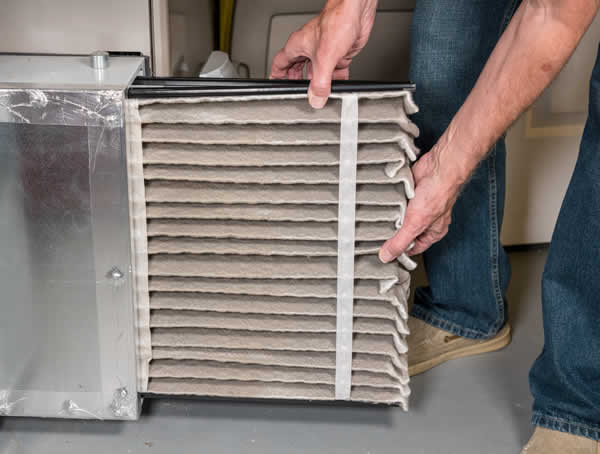Furnaces are meant to create a comfortable environment in the interior of your home. But what if that isn’t the case for you? You often feel cold inside your house even with the furnace turned on, or your home isn’t cooling off when there are extreme temperatures outside. It’s time you turned things around and figured out what the issue could be with your heating, ventilation, and air conditioning (HVAC) system.

This article will address some common furnace issues that could be making your system function inefficiently and how you can resolve them. These are the characteristics of a furnace that’s not working correctly:
- No Heat Production
- The failure of your furnace to produce heat could be due to several reasons, such as a blown fuse. But before anything else, ensure that the furnace and thermostat are both turned on. This is obvious, but you might’ve simply forgotten to switch on either of the two.
- If that doesn’t solve the issue and the furnace is still not emitting heat, try resetting the home circuit breaker. See to it that you've set the breaker to heat mode as you try and adjust its temperature to check if there’ll be a difference. Check if the fuse of your home’s circuit breaker has tripped. All the switches in the breaker should be in the same line; if one isn’t, it means it has tripped, so you should align it with the rest.
- If the above methods don’t work, you can call a professional in your area to help you out.
- Produces Weird Sounds
- Your furnace will often emit some noise as you start or stop it, but the noise shouldn’t last for long. Look out for rattling, cranking, scraping, or squealing sounds from your HVAC system. All of those indicate different issues with your furnace.
- A rattling sound could mean that your furnace has loose components that need to be tightened. Check to see if you can identify loose screws from the outside and tighten them. Meanwhile, a cranking sound could indicate that your furnace's bearings need to be lubricated.
- Squealing sounds might be a sign of an issue with your furnace’s blower belt. Open your furnace and inspect the blower belt if you have the technical know-how. Tighten it if it’s loose. If there’s wear and tear, purchase another blower belt from your local hardware store and replace it following the instruction manual. Have a furnace inspection done by a professional to figure out the underlying issue if you aren’t proficient.
- Insufficient Heat Production
- The reason your furnace isn’t producing enough heat could be clogged filters. Filters clean the air getting into the furnace and the warm air emitted into your house. Any dirt or debris filtered could build up and block those components. With clogged filters, less warm air can be produced for your entire house.
- Inspect your furnace filters and assess their condition. If they aren’t in a good state, change them and follow this routine at least every three months. Make sure that the furnace is off when doing so, and place the filters in the proper position for them to serve you efficiently.
- Another way of checking a filter’s condition is holding it up against light. If the light doesn’t pass through, the filter needs replacement.
- Your home’s insulation could be another reason your space isn’t heating up well enough. Openings in your house could be allowing some of the warm air from the furnace to escape.
- Short Cycling
- Furnaces switch off automatically once your desired temperature is reached and turn on if the temperature starts dropping again. Short cycling is when the furnace intermittently turns on and off before the temperature you want is achieved. It’s often caused by a lack of airflow, leading to overheating. An HVAC system will automatically turn off when it overheats.
- Clogged filters might be the reason there’s insufficient airflow. So go ahead and change the filters, but call in a professional if that doesn’t improve your furnace’s performance.
- Oddly Colored Pilot Flame
- The pilot flame of a properly working gas furnace should ignite with a blue flame and shouldn’t be flickering a lot. If your furnace’s flame is burning with a yellow flame and frequently flickers, it’s a sign of debris and carbon monoxide present in your furnace. Clean your furnace's burner using a vacuum cleaner after turning off the gas and power. Regularly check the state of the burner for maintenance purposes and replace it if it’s irreparable.
- The flame of your gas furnace could be off. You can light it up on your own, but you have to be extremely careful.
- Electrical furnaces don’t have a flame but instead have a light inside that you can check. A green light indicates that the furnace is properly working, but a red light portrays an underlying issue. To address the problem, ask for help from HVAC experts.

Conclusion
You need to know how a furnace operates in order to identify and fix any problems arising without calling in professionals unless necessary. Consider checking if your thermostat could be malfunctioning if your furnace is in full working order. With the solutions given above, furnace system issues shouldn’t worry you anymore. Of course, seek professional assistance if you have no idea what the exact problem is or which action you should take next.
